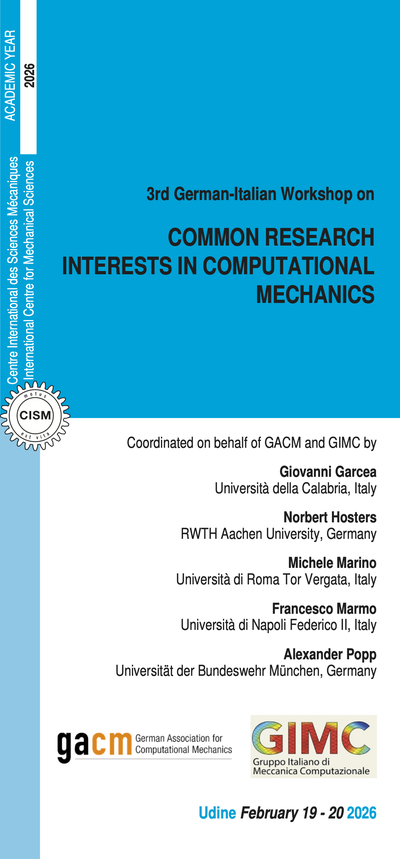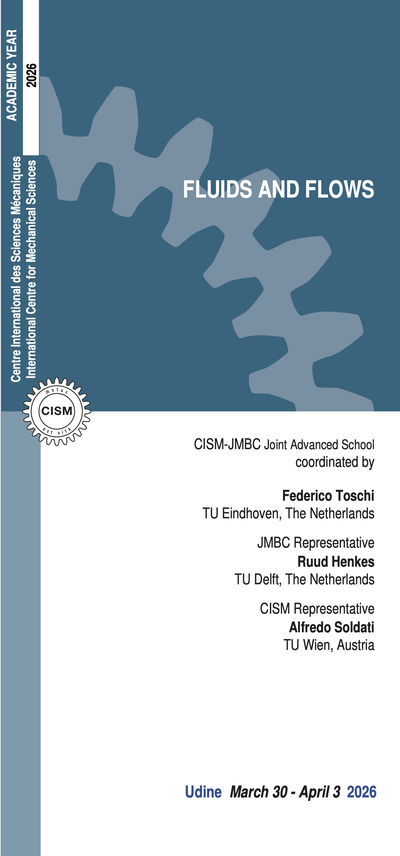Advanced mathematical formulations, computational and hybrid schemes for modelling of strongly inhomogeneous multi-component and multi-layered structures, are within the focus of the program. The course is bringing together a broad multidisciplinary expertise inspired by numerous engineering applications, including, in particular, manufacturing and design of photovoltaic panels, laminated glass, and also lightweight vehicles, soft robots, energy harvesting devices, and bio-composites.
The recent progress in material science, combined with growing demands of environmentally friendly technologies, stimulate increasingly strong interest in composite materials with high-contrast properties, as well as strongly inhomogeneous layered structures. The presence of strong contrast in material parameters, say, up to 10-5 in layer stiffness of photovoltaic panels, necessitates development of novel approaches to mathematical models governing their mechanical behaviour.
The course combines a number of theoretical approaches to studying high-contrast multi-component and multi-layered structures, including formulations based on physical assumptions, as well as asymptotic procedures. The course is also aimed at enriching the listeners with new developments in metamaterial synthesis, novel homogenisation techniques for periodic media, wave propagation in soft phononic crystals, and fatigue and fracture in soft materials.
In particular, the phenomenon of specific low natural frequencies arising as a consequence of strong inhomogeneity is discussed, along with a delicate treatment of boundary conditions, following from the appropriately adapted Saint-Venant’s principle for a thin laminate. Also, an overview of the homogenization methods of continuous or discrete periodic media is provided, addressing successively various scenarios, e.g. strain-gradient formulations of fibre-reinforced media, non-conventional behaviour of reticulated structures etc., demonstrating that generalized continua may arise from modelling of high-contrast media. In addition, a class of meta-materials associated with pantographic micro-structures, that could bear large deformations while remaining in the elastic regime, is discussed. A related topic of large deformations, buckling and post-buckling deformations and their effects on wave propagation in soft phononic crystals and metamaterials is covered. Another related subject is concerned with analysis of modelling failure in soft materials, relying on the concept of bounding strain-energy by means of energy limiters.
The lectures are chosen to appeal to researchers, graduate students and postdoctoral fellows, specializing in Mechanical, Aerospace and Civil Engineering, as well as Applied Mathematics and Physics, with the focus on recent developments in the area of high-contrast elastic solids that have not been yet included in traditional university graduate courses. Both theoreticians and experimentalists are expected to gain useful knowledge from attending the course.
Altenbach H, Altenbach J, Kissing W (2018): Mechanics of Compos- ite Structural Elements, 2nd ed., Spinger, Singapore.
Sanchez-Palencia E (1980), Non- homogeneous media and vibration theory, Springer, Berlin.
Auriault JL, Boutin C, Geindreau C (2009) Homogenization of coupled phenomena in heterogeneous media. ISTE, Wiley.
Boutin C (2019) Homogenization methods and generalized continua in linear elasticity. In Encyclopedia of Continuum Mechanics, pp. 1–35 Springer. Eds. Altenbach H, Öchsner A.
Chen YJ, Wu B, Li J, Rudykh S, Chen WQ (2021) Low-frequency tunable topological interface states in soft phononic crystal cylinders. Int. J. Mech. Sci., 191: 106098.
Wang YF, Wang YZ, Wu B, Chen WQ, Wang YS (2020) Tunable and active phononic crystals and metamaterials. Appl. Mech. Rev., 72: 040801.
dell'Isola F, Steigmann DJ (eds). (2020) Discrete and Continuum Models for Complex Metamateri- als. Cambridge University Press.
ell’Isola F, Andreaus U, Placidi L (2015) At the origins and in the vanguard of peridynamics, non-local and higher-gradient continu- um mechanics: an underestimated and still topical contribution of Gabrio Piola. Math. Mech. Solids, 20(8), 887–928.
dell’Isola F, et al. (2016) "Large deformations of planar extensible beams and pantographic lattices: heuristic homogenization, exper- imental and numerical examples of equilibrium." Proc. Roy. Soc. A 472(2185): 20150790.
Kaplunov J, Prikazchikov DA, Pri- kazchikova LA (2017) Dispersion of elastic waves in a strongly inho- mogeneous three-layered plate. Int. J. Solids Struct., 113, 169–179.
Kaplunov J, Prikazchikova L, Alkinidri M (2021) Antiplane shear of an asymmetric sandwich plate. Cont. Mech. Thermodyn., 33, 1247–1262.
Volokh KY (2016, 2019) Mechan- ics of soft materials. Springer.
Volokh KY (2021) New approach- es to modeling failure and fracture of rubberlike materials. In: Fatigue Crack Growth in Rubber Materials, Springer, 131–152.
6 lectures on: Modeling of Thin Layered Structures.
Thin-layered structures have engineering applications approximately 100 years. Within the lectures at first a brief historical overview concerning applications will be given. At second, classical examples (Timoshenko’s two-layered beam problem, the classical laminate theory, and the sandwich theory) are presented. At third, non-clas- sical or refined approaches will be discussed. Last but not least, some actual problems, widely discussed in the literature and with important applications, will be introduced.
6 lectures on: From Local Physics to Generalized Continua. Homogenization Method Applied to High Contrasts Media.
Homogenization methods of contrasted media. Generalized continua. Acoustics of fluid saturated porous media. Dynamics of contrasted elastic composites. Highly contrasted stratified plates and ribbed plates. Fiber reinforced media. Reticulated structures.
6 lectures on: Manipulation of Elastic Waves in Soft Phononic Crystals.
Theory of hyperelasticity. Tunable waves in hyperelastic structures subject to biasing fields. Tunable waves in soft phononic crystals made of hyperelastic material.Tunable waves in soft phononic crystals with electromechanical coupling. Topological elastic waves in phononic crystals. Tunable topological elastic waves in soft phononic crystals.
6 lectures on: Synthesis of Novel Metamaterials: the (not so) Particular Case of Pantographic Microstructures.
Synthesis of novel metamaterials; Generalised continua; Micro-structures homogenization; Multiscale multiphysics couplings; Synthesis of second gradient continua; Pantographic microstructures; Principle of virtual work and energy theorems; Experimental validation of theoretical results; Digital Image and volume correlation as a powerful tool for experimental mechanics.
6 lectures on: Dynamics of High-Contrast Layered and Multispan Structures.
Lowest vibration modes of multi-component elastic bars. Lowest vibration modes of layered cylinders and further generalisations. Shear waves in thin high-contrast laminates. Flexural waves in thin high-contrast laminates. The Saint-Venant principle and boundary conditions for layered plates. Surface waves on a strongly inhomogeneous coated half-space.
6 lectures on: Modeling Failure and Fracture in Soft Materials.
Modeling failure and fracture in soft materials: Brief introduction to nonlinear continuum mechanics. Hyperelasticity with energy limiters. Cavitation. Strength of composites. Condition of strong ellipticity and crack direction. Material sink theory for modeling crack propagation.
The course is offered in a hybrid format giving the possibility to attend the course also by remote (on Microsoft Teams platform). On-site places are limited and assigned on first come first served basis.
The registration fees are:
- On-site participation, 600.00 Euro + VAT* * where applicable (bank charges are not included) Italian VAT is 22%.
This fee includes a complimentary bag, five fixed menu buffet lunches, hot beverages, downloadable lecture notes.
Deadline for on-site application is September 3, 2022.
- Online participation, 250.00 Euro + VAT* * where applicable (bank charges are not included) Italian VAT is 22%.
This fee includes downloadable lecture notes.
Deadline for online application is September 21, 2022.
Application forms should be sent on-line through CISM website
A message of confirmation will be sent to accepted participants.
Upon request a limited number of on-site participants can be accommodated at CISM Guest House at the price of 30 Euro per person/night (mail to: foresteria@cism.it).
CANCELLATION POLICY
Applicants may cancel their registration and receive a full refund by notifying CISM Secretariat in writing (by email) no later than:
- September 3, 2022 for on-site participants (no refund after the deadline);
- September 21, 2022 for online participants (no refund after the deadline).
Cancellation requests received after these deadlines will be charged a 50.00 Euro handling fee. Incorrect payments are subject to Euro 50,00 handling fee.
GRANTS
A limited number of participants from universities and research centres who are not supported by their own institutions can request the waive of the registration fee and/or free lodging.
Requests should be sent to CISM Secretariat by August 15, 2022 along with the applicant's curriculum and a letter of recommendation by the head of the department or a supervisor confirming that the institute cannot provide funding. Preference will be given to applicants from countries that sponsor CISM.





